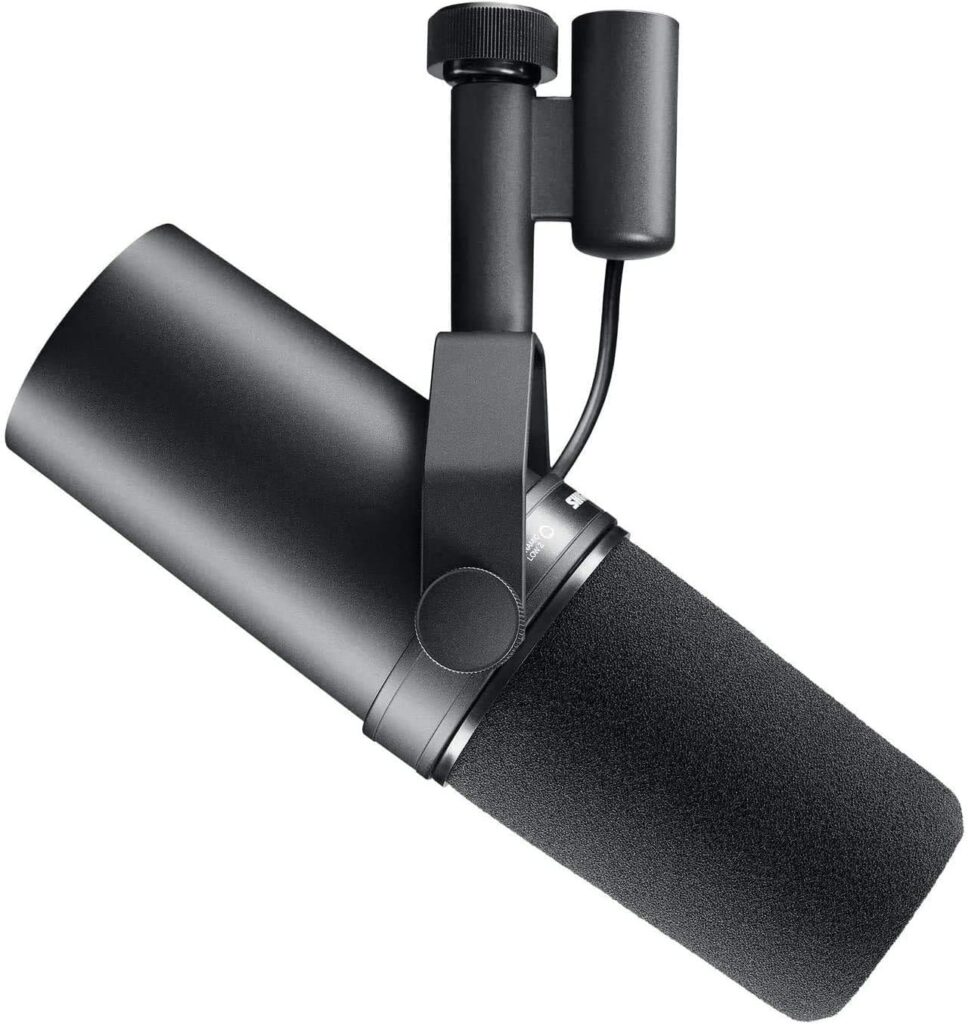Best Broadcast Microphones (All budgets)
Whether you’re podcasting, streaming, recording voiceovers, or conducting interviews, your microphone is the foundation of your audio chain. In this guide, we will explore the top broadcast microphones on the market in 2025, considering factors like sound quality, versatility, durability, and value. Before diving into specific recommendations, it’s important to understand the main types of microphones used in broadcasting:
Dynamic microphones use a simple electromagnetic system to convert sound into electrical signals. They’re generally:
- More durable and resistant to environmental factors
- Better at rejecting background noise
- Excellent for loud sources and live environments
- More affordable than condenser options
- Less sensitive, requiring closer speaking distances
Condenser microphones use a capacitor-based design that offers:
- Higher sensitivity and detail
- Wider frequency response
- Better capture of nuance and subtlety
- Require phantom power (+48V)
- More susceptible to ambient noise and plosives
What is the best Broadcast Microphones?
Here is my top picks for the best broadcast microphones to use for podcasting and broadcasting in 2025 .
Shure SM7B

The Shure SM7B remains the gold standard for broadcast dynamic microphones, even in 2025. Its iconic status in radio stations, podcast studios, and recording facilities is well-earned.
Key Features:
- Smooth, flat, wide-range frequency response
- Excellent rejection of electromagnetic hum
- Built-in pop filter and shock mounting
- Warm, proximity-focused sound signature
- Legendary durability
Best For: Professional podcasters, broadcasters, vocalists seeking studio-quality sound
Price Range: $399-$449
Electro-Voice RE20
The RE20 has been a broadcast staple for decades, known for its Variable-D technology that minimizes proximity effect.
Key Features:
- Consistent cardioid pattern regardless of speaking distance
- Internal shock mounting
- Heavy-duty build quality
- Flat response with extended bass
- Internal pop filter
Best For: Radio broadcasters, podcasters with deeper voices, spoken word applications
Price Range: $449-$499
Røde PodMic
The Røde PodMic offers professional broadcast quality at a more accessible price point.
Key Features:
- Optimized for speech applications
- Internal pop filter and shock mounting
- Solid all-metal construction
- Rich, balanced sound profile
- Compact form factor
Best For: Podcasters on a budget, streamers, content creators seeking quality without breaking the bank
Price Range: $99-$129
Shure MV7
Bridging the gap between professional XLR and convenient USB microphones, the Shure MV7 offers incredible versatility.
Key Features:
- Dual USB/XLR outputs
- Touch panel controls
- Auto-level mode
- Smartphone compatibility
- Sound profile similar to the SM7B
Best For: Content creators who need flexibility between professional and portable setups
Price Range: $249-$299
Neumann U87 Ai
The Neumann U87 represents the pinnacle of broadcast and studio recording microphones.
Key Features:
- Three directional patterns (cardioid, omnidirectional, figure-8)
- Switchable low-frequency roll-off
- Pad switch for high SPL handling
- Unmatched clarity and detail
- Legendary status in professional audio
Best For: Professional broadcast studios, voiceover artists, audiophiles with generous budgets
Price Range: $3,199-$3,599
Audio-Technica AT4053b
This hypercardioid condenser microphone offers exceptional off-axis rejection for challenging environments.
Key Features:
- Transformerless circuitry for fast transient response
- Switchable 80 Hz high-pass filter
- High SPL handling
- Low self-noise
- Natural, uncolored sound
Best For: Field recording, interviews in noisy environments, broadcast applications
Price Range: $599-$699
AKG C414 XLII
The C414 is a versatile workhorse condenser that has been refined over decades.
Key Features:
- Nine polar patterns
- Three-position bass cut filter
- Three-position pad
- LED status indicators
- Robust metal construction
Best For: Professional studios requiring maximum versatility, voiceover work, broadcast applications
Price Range: $899-$1,099
Lewitt LCT 440 Pure
A newer entry to the market that has quickly gained popularity for its clarity and value.
Key Features:
- Exceptionally flat frequency response
- Very low self-noise
- High-quality components
- Modern design
- Excellent price-to-performance ratio
Best For: Home studios, content creators seeking condenser quality at a reasonable price
Price Range: $269-$329
Shure MV7X
The XLR-only version of the MV7 offers the same broadcast-quality sound as its hybrid counterpart but at a lower price point.
Key Features:
- Professional broadcast sound
- Voice isolation technology
- Durable all-metal construction
- Compatible with Shure’s MOTIV app
- Excellent value for money
Best For: Podcasters and broadcasters who already have an audio interface
Price Range: $179-$219
Blue Yeti X
The Blue Yeti X continues to dominate the USB microphone space with its versatility and ease of use.
Key Features:
- Four pickup patterns
- Real-time LED metering
- Blue VO!CE software with broadcast effects
- High-resolution 24-bit/192kHz recording
- Zero-latency monitoring
Best For: Streamers, podcasters, and content creators needing a versatile USB solution
Price Range: $169-$199
HyperX QuadCast S
Popular among streamers and gamers, the QuadCast S combines quality audio with gaming aesthetics.
Key Features:
- RGB lighting customization
- Four polar patterns
- Internal shock mount
- Tap-to-mute sensor with LED indicator
- Built-in pop filter
Best For: Gaming streamers, content creators wanting visual flair
Price Range: $159-$179
Final Thoughts
In summary, The broadcast microphone market in 2025 offers options at every price point and for every application. While technology continues to advance, many of the industry standards have remained consistent for good reason – they simply sound great.
For most broadcasters and content creators, dynamic microphones like the Shure SM7B, Electro-Voice RE20, or Røde PodMic offer the best combination of sound quality, durability, and ambient noise rejection. Those requiring more detail and who record in controlled environments might prefer condenser options like the Neumann U87 or Lewitt LCT 440 Pure.
